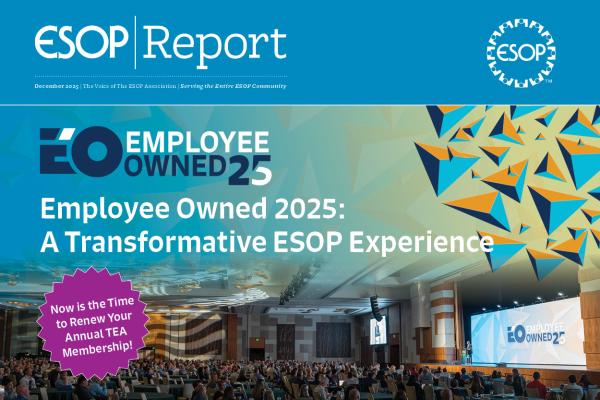Congress needs to consider public policy decisions with worst actors in mind, not the best. The ESOP Association has admired the commitment to shared equity Pete Stavros has demonstrated through his PR efforts and the voluntary shared equity plans he has championed at his own firm. TEA will concede that were Pete Stavros the only private equity fund leader to try to implement a STEP plan, the likelihood for abuse might be low. However, there are literally thousands of other private equity funds that have proven over and over that they will take every opportunity and create every possible loophole to make a buck. Just a few of these bad actors could create a cascade of negative media and the following policy recriminations against all ESOPs. Below are five ways that quickly come to mind that show how bad actors could abuse the STEP (and we are not nearly as clever as these experts in finance and leverage).
1.) Slow Roll Allocations and/or Vesting
While the STEP pool may accrue value from tax benefits, a PE firm could choose not to allocate any of the shares held by the plan into individual employees accounts. That way, if employees leave for any reason before the sale, they have no allocation in which to become vested and get paid nothing. Employees are stuck wearing golden handcuffs, with no cost to the company for terminating or spinning off any employee or group of employees.
2.) Exit-Date Arbitrage or Spin-offs
The PE firm has total control over whether or not to lay off employees and spin-off divisions or subsidiaries. Because they set their own terms for how and when employee allocations are made within the plan, what is stopping a PE firm from laying off employees, shifting them to affiliate units, or restructuring the corporation to avoid giving them the STEP payout? Or simply using the STEP plan as an alternative to a severance payment by promising to “immediately vest” the terminated employee in a plan allocation in exchange for waiving their employment rights? An actual ESOP would prevent this type of behavior.
3.) Annual Undervaluation
If a board of directors decides to allow employees to sell their shares back to the company annually, how will they value those shares? The business has a strong incentive to undervalue its shares for early-selling employees. Since the STEP plan sponsor has received an exemption from ERISA oversight and litigation, nothing stops the company from undervaluations, or at a minimum severely “discounting” the minority shares when purchasing from the employees.
4.) Pay Themselves, Sell off the Assets
The STEP proposal specifies that the PE firm would need to pay off bank loans before paying employees their payout. That’s reasonable. But they can also pay themselves off, too. PE firms are also known to replace debt to themselves with additional astronomical levels of outside debt after the initial transaction. Often, they do this to repay their initial investment, to take on other acquisitions, or to shift tangible assets from one portfolio company to another. They are known for “equity stripping” where they sell off tangible assets to their other portfolio companies at a severe discount only to rent back those same assets at above market rates (this is what they did to Red Lobster, Toys R’ Us, and countless others). Sure, it drives the value of the company down, often into bankruptcy. But if they have already shifted anything of value to another business they own, paid themselves back with debt loaded onto the company, what happens when they can barely pay the bank? Employees get nothing, even though the investment firm got their tax cuts.
5.) Liquidation Event Flexibility
Finally, a likely scenario could unfold when preparing a firm for liquidation. Any buyer that wants a reduction in force could make terminations a requirement prior to closing the sale. Because company leadership has adopted a policy under a STEP with no individual vesting, any employees in that pre-close termination don’t need to be paid out. Those employees get laid off and leave with nothing, while the remaining employees get an extra bonus because the equity pool is spread among a smaller number. The surviving employees feel even better about their liquidation bonus.







